"BCAAs vs. EAAs?"
For quite a while, that was the big argument. Over the decades, branched-chain amino acid (BCAA) supplements have been some of the most popular (and profitable) products on the market. Catapulted into the spotlight by some early -- and somewhat questionable -- research, along with a lot of savvy marketing, BCAAs quickly became the darlings of the industry.
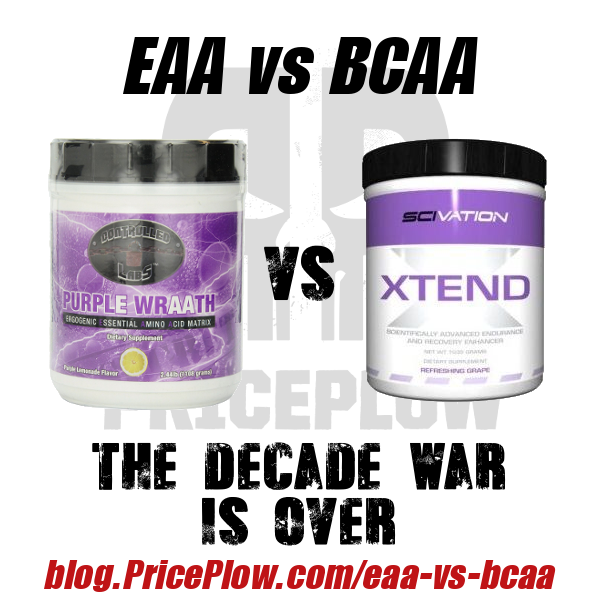
The decades-long EAA vs. BCAA war is officially over. What ever happened to that Marc Lobliner guy anyway???
Supplement companies had bros and broettes believing that pounding gallon jugs of these three amino acids would bring unheralded gains in size and strength. In reality, chugging these flavored waters was doing little to make epic gains, but it did make some supplement companies epically wealthy.
Is the era of BCAA slowly coming to an end?
There were a few proponents shouting that all the essential amino acids (EAAs) were needed to maximize size and strength (as opposed to just the three BCAAs), but alas, those few voices were dwarfed by the sheer force and noise that was the BCAA movement.
If you're old enough, you may even recall this frequent argument:
Scivation Xtend vs. Purple Wraath: A stroll down memory lane
When PricePlow was launched in 2008, the big battle in the Bodybuilding Forums was "Scivation Xtend vs. Controlled Labs Purple Wraath?!"[1] The former had just BCAAs, while the latter was augmented with a full spectrum of essential amino acids (hence the 'eaa' letters highlighted in Purple Wraath).
Although Scivation clearly won the marketing battle, it turns out that Controlled Labs won the science battle:
Full-spectrum EAAs are better for nearly all use cases!
Not until recently has the public started to catch on to the notion that BCAAs aren't the be all, end off of amino acid supplementation. In fact, they might actually be doing certain individuals more harm than good according to some research.[2]
So take a look for yourself as to why you should be supplementing with the full spectrum of EAAs, and not just the three BCAAs!
BCAAs vs EAAs
Deciding between EAAs and BCAAs begins with an understanding of amino acids. The human body uses a total of twenty amino acids, which can be divided between essential, nonessential, and conditionally essential amino acids. The EAAs (and BCAAs) are our primary focus here, so we'll leave the discussion of nonessential and conditionally essential amino acids for a separate article.
EAAs (Essential Amino Acids)
Essential amino acids are those that cannot be made by the body, and must be obtained through the diet. This is why they're all "essential". There are nine EAAs that consist of:
- Histidine
- Isoleucine*
- Leucine*
- Lysine
- Methionine
- Phenylalanine
- Threonine
- Tryptophan
- Valine*
* Denotes the BCAAs, which are a special subcategory of the EAAs (leucine, isoleucine, and valine).
How the three BCAAs are a bit different
BCAAs are metabolized differently than the rest of the amino acids in the body. Rather than pass through the stomach and onto the liver for processing, the BCAAs bypass the liver and are transported to your muscles, where they are broken down into branched-chain oxo acids (BCOA).[3,4]
The Good News: From BCAAs to BCOAs to ATP (energy!)
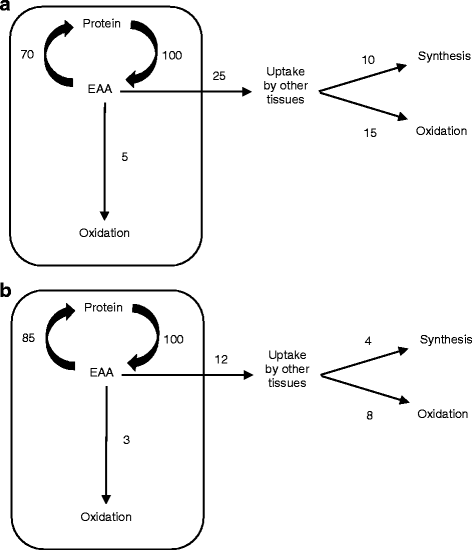
Schematic representation of the recycling of essential amino acids (EAAs) from muscle protein breakdown into muscle protein synthesis in the post-absorptive state.[2]
These BCOAs are then used for the production of ATP, which is why we say that BCAAs can be great for improving endurance and energy levels during exercise. The other benefit to BCAAs is that they activate the mechanistic target of rapamycin (mTOR) pathway, which stimulates muscle protein synthesis (MPS) in the body.[5]
Truth be told, much of this mTOR activation is attributed to leucine, so one would argue that it might be worthwhile to just supplement with leucine alone versus either BCAAs or EAAs, but we'll explain later why that's still not good enough (and may even have some negative consequences at too high of doses).
Now, the "hype" behind BCAAs was that because they stimulate mTOR, that automatically resulted in better muscle growth.
But here's the catch...
To increase protein synthesis above basal levels, you need all nine EAAs![6,7]
BCAAs are anti-catabolic, not necessarily directly anabolic. In other words, they can help prevent muscle protein breakdown.[2,8]
Building muscle is a simple process when you get down to the cellular level. Muscle Protein Synthesis (MPS) must be greater than Muscle Protein Breakdown (MPB). So,
Since a straight BCAA supplement does not contain all nine of the EAAs required by the body to build muscle, they are not superior for muscle growth.[2,9] That's not to say that BCAAs are outright useless -- BCAAs may be of benefit during endurance exercise or fasted training because they can be used for fuel, which we discussed above.
BCAAs for endurance or preventing catabolism... but not making gains
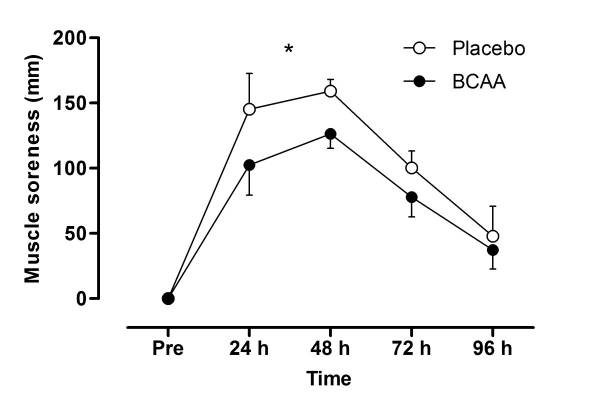
BCAAs can do wonders for muscle soreness according to some research, but more aminos are needed to build muscle.[7]
BCAAs (alone or in combination with carbohydrates) also reduce exercise-induced fatigue[10,11] and stave off catabolism (protein breakdown),[2,8] but don't make the mistake of assuming that just because you're slamming jugfulls of BCAAs all day long, you're going to get better muscle-building gains. That's the part that's not happening -- and that's unfortunately the part that's most important to many of our readers in the core sports nutrition demographic.
Furthermore, the human body has a greater requirement for lysine (the other ketogenic amino acid alongside leucine) than it does for either isoleucine or valine,[12] so why not just supplement with leucine and lysine? Yet that won't work either because you're still lacking the other seven amino acids needed to build proteins.
Simply put, if you want to build muscle, you need ALL the EAAs, not just the BCAAs.
How BCAAs Became Popular
If EAAs have been more effective all along, how in the world did BCAA supplements become a golden goose in the industry? Two important words that are very familiar to supplement users -- marketing and taste.
They're easier to flavor
Quickly regarding taste, there's no doubt that using all nine EAAs definitely bring down the flavor profile of an amino acid supplement. Back in the 2000s when BCAAs were getting the hard push, there's a chance that researchers knew that EAAs were indeed better... but the supplement companies couldn't properly flavor them at the time. It was impressive enough that Scivation was able to get Xtend to be so tasty (we consider them the pioneers in this regard).
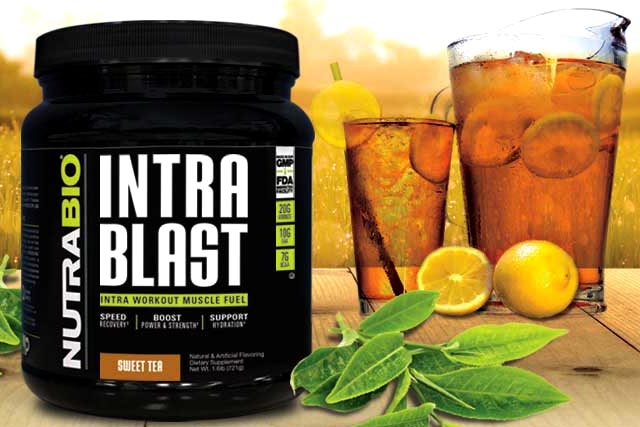
Times certainly have changed. We used to fight over a watermelon BCAA. Now we're flavoring our EAA supplements with summer sweet tea! (Pictured: NutraBio Intra Blast)
So for well over a decade or so, brands sold BCAAs and pushed them with research like the examples cited below.
However, several years later, flavor systems have now gotten so good that flavorists worth their salt can properly mask even the nastiest of EAA blends, and supplement companies no longer need to "hide" from the other essentials.
But while you're hiding behind your three easier-to-mask branched-chains, how about some "research" to pass the time:
How to make a BCAA study look fabulous
Initial studies on BCAA supplements in the late 1990s showed that they were useful for losing body fat and retaining lean muscle mass.[13] Awesome, right?
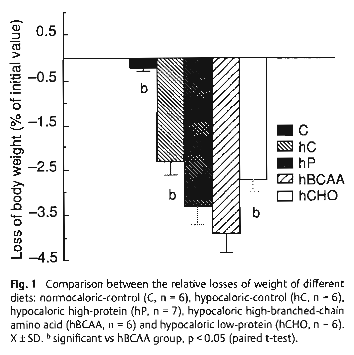
Give a kid on the wrestling team in severe caloric restriction over 50g BCAA and he'll lose more weight compared to those who are given complete proteins![13] Okay.
Well, the "gotcha" part of this study (conveniently left out of marketing) is that these subjects were in a severe caloric deficit and more importantly, they weren't consuming adequate amounts of protein.[13] The test group was only eating around 80g of protein / day, hardly enough for 150lb male, which just so happens to be the size of the subjects in the group.
Furthermore, subjects in this study were consuming a massive 52g of BCAA/day -- 10x more than you're getting in most BCAA supplements. That's like taking down a new tub of aminos every week - a $100/month habit!
For the record, the participants in this study were wrestlers, which explains the crazy dietary numbers above.
Things change when you control for proper protein intake
Additionally, you'll also notice in a lot of the BCAA studies, protein intake is not controlled nor accounted for.[7] But, when protein intake has been accounted for, the research shows that supplementing with additional leucine (3g) does NOT provide any extra benefit in terms of muscle size or strength compared to placebo.[14] FYI, subjects in that study consumed between 1.6-1.7g/kg/day of protein, certainly a higher protein diet than the average individual walking the streets.
Hopefully by this point, you're starting to understand BCAA supplements aren't all they're cracked up to be for muscle growth when used it most reasonable situations.
But wait, there's more. We can't ignore the next two studies!
The industry-funded BCAA studies get a bit... ridiculous
While these aren't "EAA vs. BCAA" studies, they're worth discussing since both have been used to sell BCAAs.
Two studies, both funded by the aforementioned Scivation brand, have been cited as evidence for the benefits of BCAA supplements - one for muscle growth and one for weight loss:
-
Jim Stoppani strikes again: 8.8lbs of lean muscle mass?!
In 2009, our dear friend Jim Stoppani published a study comparing 14g BCAAs, 28g whey protein, and a 28g carbohydrate sports drink in trained athletes on an eight-week training program.[15]
The BCAA group somehow gained 4±1kg lean body mass (yes, around 8.8 pounds of muscle... up to and possibly over ten pounds!) while the whey group only gained 2±1kg and the carbohydrate group (1±1kg). They also had better 10-rep strength gains in bench and squat.
Holy Stoppoli, 10lbs of muscle mass!!! Never mind that it wasn't peer reviewed and there was no diet protocol given or monitored...
Those results seem nothing short of miraculous, and while some went on to use it as marketing material, others pointed out quite a few serious deficiencies:
-
There was no diet protocol given. Calories and protein intake are not controlled nor accounted for.
-
There was no peer review (that we know of).
-
The study's write-up was incredibly brief and lacking detail.
-
There is no supplemental data that can be found.
It isn't stated what supplement was used, but it can be assumed that it was Scivation Xtend, given that Scivation funded the research.[15] If it was indeed Xtend, its inclusion of citrulline malate and glutamine adds small confounds over the BCAA content, but those almost definitely don't count for these miraculous gains either.
Needless to say, we're not so sure about this one... Classic Jim!
-
-
The weight loss study so questionable that Aragon and Schoenfeld had to publish a response
More recently, a BCAA weight loss study also funded by Scivation compared BCAAs to carbohydrates in a hypocaloric diet... kinda. In the results section, they concluded that BCAA users lost a whopping 0.05kg fat mass (-0.11lbs) while comparing different metrics for the carbohydrate group, which lost lean mass (-0.90kg) as well as body mass (-2.3kg).[16]
The study's results was so oddly cobbled together that they warranted a deeper look. After finding several discrepancies, Alan Aragon and Brad Schoenfeld felt the need to publish a critique to the same journal. They pointed out that the study completely contradicts itself -- in one area the study's researchers claim the carbohydrate group did not lose fat mass, but if you do the math, the carb group actually lost more fat mass than the BCAA group![18]
Somehow, the study determines a loss of 0.05kg fat mass (for BCAA) to be significant, but does not deem the loss of 1.4kg fat mass (for carbs) to be significant. Aragon and Schoenfeld pick up on this and believe that the wrong statistical measures were used to analyze the data.
Additional errors were found which you can read about in the blog post linked above, but you get the idea - something's "off" here - so let's make our way back to the EAA argument.
...But if you're looking to maximize performance, recovery, and most importantly, growth, then maybe it's time to consider adding some extra EAAs... even if they taste worse.
The point of this section being, while there's some okay research on energy, endurance, and anti-catabolism when athletes use BCAAs, the sponsored studies attempting to attack what consumers truly care about -- body composition changes -- are full of holes and are worth questioning at the very least... and may be worth retraction at the very most.
So what makes EAA Supplements Better Than the EAAs?
The reason we've been beating the EAA drum so much lately is for a couple of reasons:
When compared head to head, EAAs stimulate a much stronger anabolic response in the body than BCAA supplements.[19] A study conducted in resistance-trained men gave them either 5.6g of BCAA (a dose similar to what you'll get in your typical BCAA supplement) or placebo. Men were put through leg exercises after which data (including muscle biopsies) was collected and analyzed.
Researchers determined that BCAAs "stimulated a 22% greater response of myofibrillar-MPS following resistance exercise compared with a placebo."[19]
However...
"The magnitude of this increased response of myofibrillar-MPS was ~50% less than the previously reported myofibrillar-MPS response to a dose of whey protein containing similar amounts of BCAA[20,21]"[19]
In other words, while BCAA are better than consuming absolutely nothing during your workout, they are substantially less effective than whey protein, in all likelihood due to the lack of other EAAs. Researchers concluded:
"...results demonstrate that BCAAs exhibit the capacity to stimulate myofibrillar-MPS, however a full complement of EAA could be necessary to stimulate a maximal response of myofibrillar-MPS following resistance exercise...
Our data support the notion that BCAA ingestion alone does not maximally stimulate myofibrillar-MPS following exercise despite stimulation of translation initiation pathways. The lack of sufficient EAA appears to limit the response of myofibrillar-MPS following exercise...ingestion of BCAAs alone may not be the optimal nutritional regimen to stimulate a maximal MPS response to resistance exercise training."[19]
Analyzing the Anabolic Response: Unwarranted Claims?!
A recent comprehensive review of the literature that sought to verify the claims made by BCAA supplements that they promote an anabolic response concluded:
"An extensive search of the literature has revealed no studies in human subjects in which the response of muscle protein synthesis to orally-ingested BCAAs alone was quantified... found that BCAAs decreased muscle protein synthesis as well as protein breakdown, meaning a decrease in muscle protein turnover... We conclude that the claim that consumption of dietary BCAAs stimulates muscle protein synthesis or produces an anabolic response in human subjects is unwarranted."[2]
Moberg adds mo' EAA Research
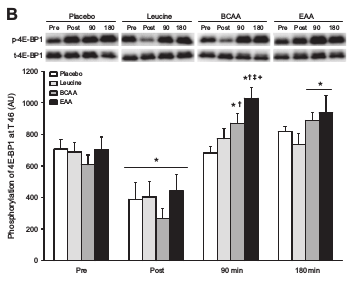
"In summary, oral supplementation with BCAA following resistance exercise stimulates mTORC1 signaling more potently than ingestion of leucine alone, but not as effectively as EAA."[22]
Perhaps the most damning study is one conducted in 2016 by Moberg, et al.[22] In this double-blind, placebo-controlled study, resistance trained men were put through a series of leg exercises and given one of the following:
- Water (placebo)
- Leucine alone
- All three branch-chain amino acids (BCAA)
- Essential amino acids including the BCAA (EAA)
Following the trial, measurements were taken and biopsies were collected, and after everything was organized, tabulated, and calculated, researchers concluded:
"In summary, oral supplementation with BCAA following resistance exercise stimulates mTORC1 signaling more potently than ingestion of leucine alone, but not as effectively as EAA."[22]
In other words, EAA > BCAA > Leucine alone for building muscle.
Achieving the best of both worlds: using EAA + Leucine to achieve results close to 25g Whey Protein
Now that the science is settling on the fact that we'd rather have a full-spectrum EAA, the question starts to revolve around dosing, timing, and how we can tweak maximum benefits out of minimum "input".
An interesting study published by Tyler Churchward-Venne discovered that a low-protein (6.25g) beverage can be as effective as a high-protein dose of whey protein (25g) at stimulating increased MPS (myofibrillar protein synthesis) rates... when you take those 6.25g and supplement them with 5.0g leucine![20,24]
This is helpful because not everyone wants to chug a shaker full of 25g whey protein before (and especially not during) training... but if you can come up with a ~6.25g whey or EAA drink and then add the 5g leucine, you can get away with fewer calories and save some money to boot.
In the study, the 6.25g whey + 3g leucine group (this was noted as "W6+Low-Leu") fared okay, but not as well as the 6.25g whey + 5g leucine group ("W6+High-Leu"). So our general recommendation is that 5g extra leucine on top of EAAs may be best for the guys, while 3g leucine should be enough for most gals.
Theories why EAA + Leucine handily defeated EAA + BCAA
An interesting thing this study points out is that BCAAs may actually antagonize each other, which is how they try to explain the whey + high leucine intervention doing so much better than whey + BCAA. It turns out that it's been known since 1966 that they may impede leucine's absorption in the gut![25] Further, the three branched aminos even compete for the same transporter at various sites,[26] so why not try to get a bit more of the anabolic one (leucine) if you're trying to build muscle?!
Moving on -- what about timing?
Pre or Post? Timing your Amino Acid Supplements
There's always a question of timing: Do you take the aminos before the workout so they're already in your system and can get to work repairing and building muscle while your training, or would you rather take advantage of the post-workout enhanced insulin sensitivity of your muscles which makes for rapid uptake of the amino acids?
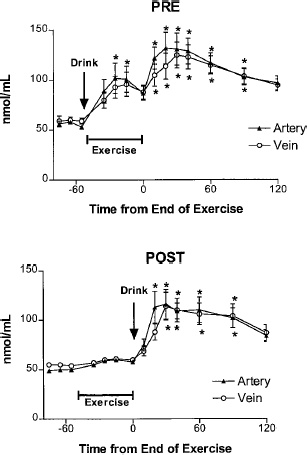
Can't decide when to take your aminos -- pre, during, or post. According to one, study, pre workout is where it's at.[27] To be reasonable, we like to start pre workout, but keep sipping throughout.
There's an interesting study that sheds some light on the situation. Men were assigned to either the pre workout dosing of EAAs (entire bolus taken immediately pre workout) or post workout dosing of EAAs.[27] Following an intense leg training session, muscle biopsies were collected (i.e. chunks of muscle were scavenged from participants) to determine the difference in amino acid uptake between pre and post workout consumption of EAAs.
The men consuming EAAs pre workout took up approximately 42% of the amino acids versus the post training EAA group who took up only about 16%![27]
Note that this is not fully conclusive since there were only six participants, but they were crossed over (all individuals performed both tasks), so it compares both sides of the story for each of the six individuals.
This is why we like to start sipping on the EAAs just before training (and perhaps during warm-up cardio), and then sip on them throughout the training - in an attempt to get a "best of both worlds" situation while enjoying the flavor too, since the industry has come a long way in flavoring the EAA supplements.
And on the note of those supplements:
So what Full-Spectrum EAA Supplements are we drinking?
We have to start with the one that kicked this whole argument off in the first place, and then hit up our other favorites, each with various doses, add-ons, and flavors:
- Controlled Labs Purple Wraath
- NutraBio Intra Blast and NutraBio Alpha EAA
- Ghost Amino
- Raw Nutrition Raw EAA
- PES Amino IV
And how can we forget ALR HumaPro by the late, great Author L. Rea, another man who fought for EAAs before they were cool, only to sadly pass away just as research was proving that he was right. Author, you are officially vindicated. Rest in Peace, friend.
40 is the new 30, and EAA is the new BCAA
When faced with the choice between EAA or BCAA, it's a no brainer: EAAs every single time. Preferably with some extra leucine.
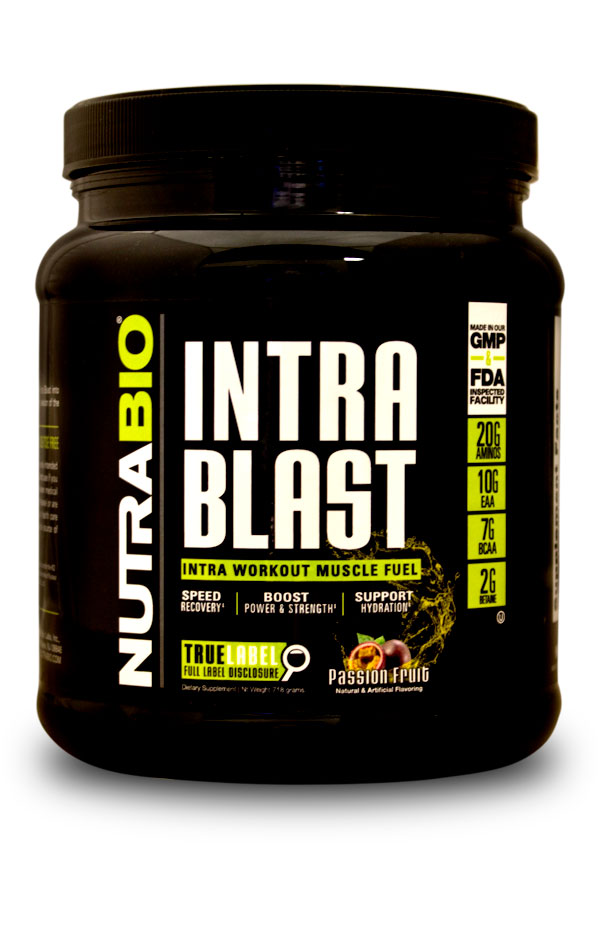
There's a lot of great EAA supplements on the market, but the most comprehensive one is NutraBio Intra Blast.
Since EAA supplements inherently contain the BCAAs, you get the best of both worlds. First, there's the increased muscular endurance and resistance to muscle protein breakdown that comes with BCAAs. But second, you also get a much stronger anabolic response and all of the building blocks necessary to build lean muscle along with the other countless benefits of EAA supplementation.
If we've learned anything, it's that we want a full-spectrum EAA supplement (or even hydrolyzed whey!), but with a bit of extra leucine (5g seems ideal for now) added for good measure. Thankfully, some of our favorite supplement companies listed above have just begun doing that!
If you have a stash of BCAA supplements lying around the house, sure you can use them for a tasty flavored endurance water from time to time. But if you're looking to maximize performance, recovery, and most importantly, growth, then maybe it's time to consider adding some extra EAAs... even if they taste worse.
Scivation may have won the first amino war, but Controlled Labs won the most important battle leading into the second war. And now they -- and everyone else embracing EAAs -- are positioned with supplements that actually work for their intended purpose: building muscle.
NutraBio Alpha EAA – Deals and Price Drop Alerts
Get Price Alerts
No spam, no scams.
Disclosure: PricePlow relies on pricing from stores with which we have a business relationship. We work hard to keep pricing current, but you may find a better offer.
Posts are sponsored in part by the retailers and/or brands listed on this page.
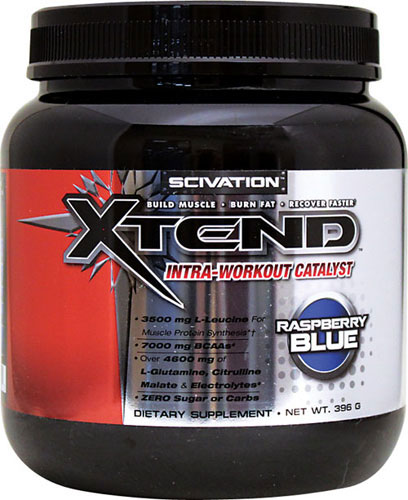
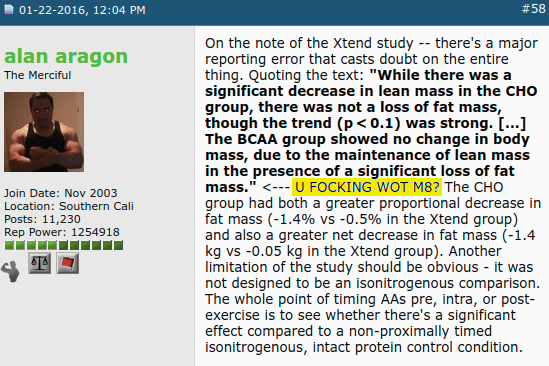


Comments and Discussion (Powered by the PricePlow Forum)